 |
 |
 |
| |
Rilpivirine pharmacokinetics in HIV-1-infected adolescents:
a substudy of PAINT (Phase II trial)
|
| |
| |
Reported by Jules Levin
CROI 2014 March 3-6
Boston, MA
Herta Crauwels,1 Annemie Hoogstoel,1 Simon Vanveggel,1 Wayne Yarnall,2 Marita Stevens,1 Katia Boven2
1Janssen Infectious Diseases BVBA, Beerse, Belgium; 2Janssen Research & Development, LLC, Titusville, NJ, USA

Program abstract-
Background: Rilpivirine (RPV) is a non-nucleoside reverse transcriptase inhibitor (NNRTI) approved in combination with other antiretrovirals for the
treatment of HIV-1-infected, treatment-naïve adults. RPV pediatric dosing has not been established. PAINT (Pediatric study in Adolescents Investigating
a New NNRTI TMC278, NCT00799864) is an ongoing, open label, 48-week Phase II trial to evaluate RPV pharmacokinetics (PK), safety/tolerability and
antiviral activity in adolescents. Part 1 of PAINT aimed to establish, in a subset of adolescents, a well-tolerated RPV dose providing comparable exposure to
adults. Steady-state PK data from Part 1 are presented.
Methodology: Antiretroviral treatment-naïve HIV-1-infected adolescents (>12-≤18y) were recruited from investigational sites (India, Thailand, Uganda,
South Africa). All patients were treated with RPV 25mg once daily (qd), taken with a meal, and two nucleoside/nucleotide reverse transcriptase inhibitors. A
steady-state 24h PK profile was determined using blood samples collected predose, 2, 4, 5, 6, 9, 12 and 24h after an observed RPV dose, at the Week 2 or
Week 4 visit. RPV plasma concentrations were determined by liquid chromatography-tandem mass spectrometry (1.0 ng/mL lower limit of quantification),
and RPV PK parameters with non-compartmental analyses.
Results: Twenty-five adolescents were enrolled in Part 1, 12 were >12-≤15y and 13 were >15-≤18y old. There were 11 males and 14 females; 4 were
Asian and 21 Black. Intensive PK data were available for 23 adolescents. The geometric mean (SD) AUC24h, C0h and Cmax were 1750 (718) ng¥h/mL, 70.6
(40.4) ng/mL and 102 (38.0) ng/mL, respectively. These values are comparable to those observed in adult HIV-1-infected patients. Geometric mean PK
parameter ratios (adolescents/adults) were 0.98, 1.21 and 0.88 for AUC24h, C0h and Cmax, respectively. There was no apparent relationship between RPV
PK parameters and bodyweight, and no apparent difference in RPV PK parameters between age categories or between genders. At Week 4, the mean (SE)
observed decrease from baseline in viral load was 2.3 (0.17) log10 copies/mL, and the mean (SE) observed increase in CD4+ cell count was 104.6 (27.20)
cells/mm3. Up to week 4, 16/25 (64%) patients experienced at least one adverse event (AE), none serious or grade 4, considered related to RPV in 8/25
(32%). The observed AEs were similar (type and severity) to those reported in adults (53% up to Week 4).
Conclusions: The RPV dose selected for further evaluation in adolescents >12-≤18y old is 25mg qd with a meal. This dose provides comparable RPV
exposure in adolescents and adults, and was generally safe and well tolerated. Long-term safety/tolerability, antiviral activity and further PK of RPV in
adolescents are being investigated in Part 2 of PAINT.






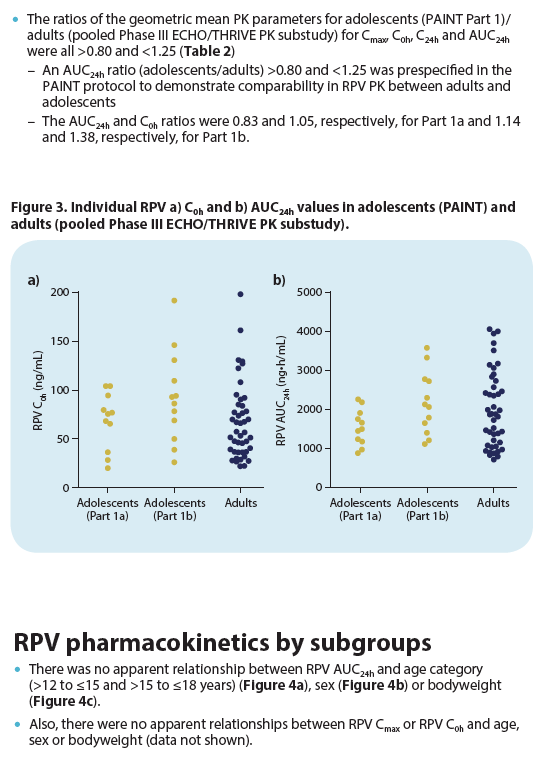
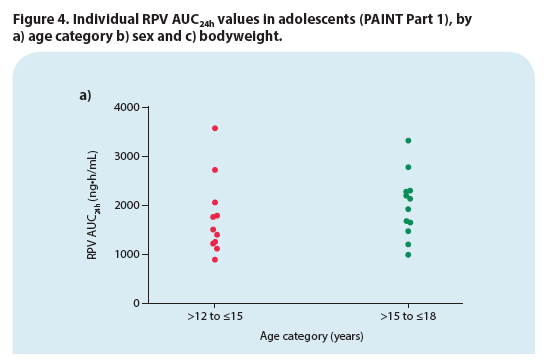
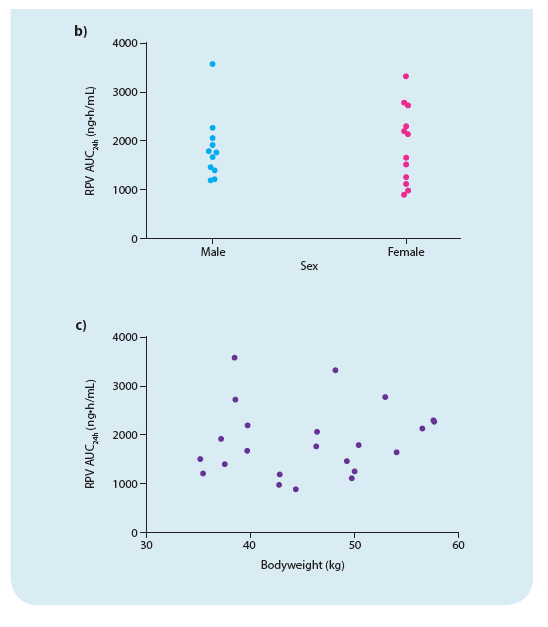
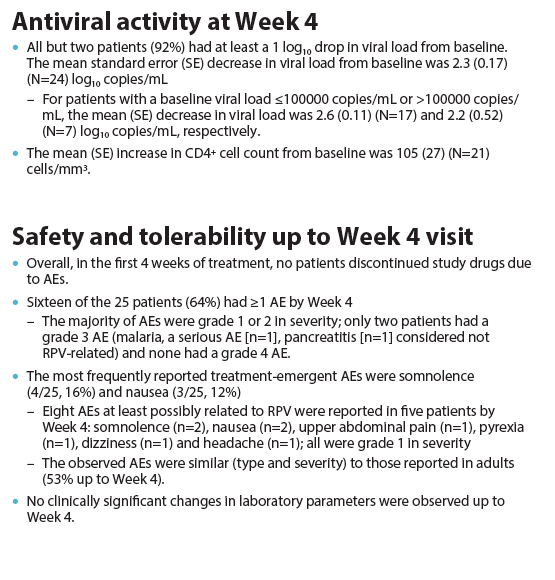
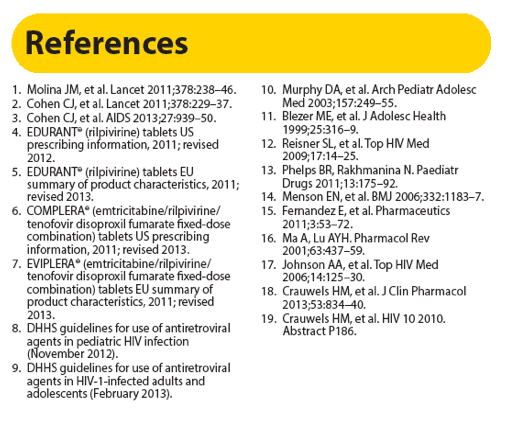
|
| |
|
 |
 |
|
|